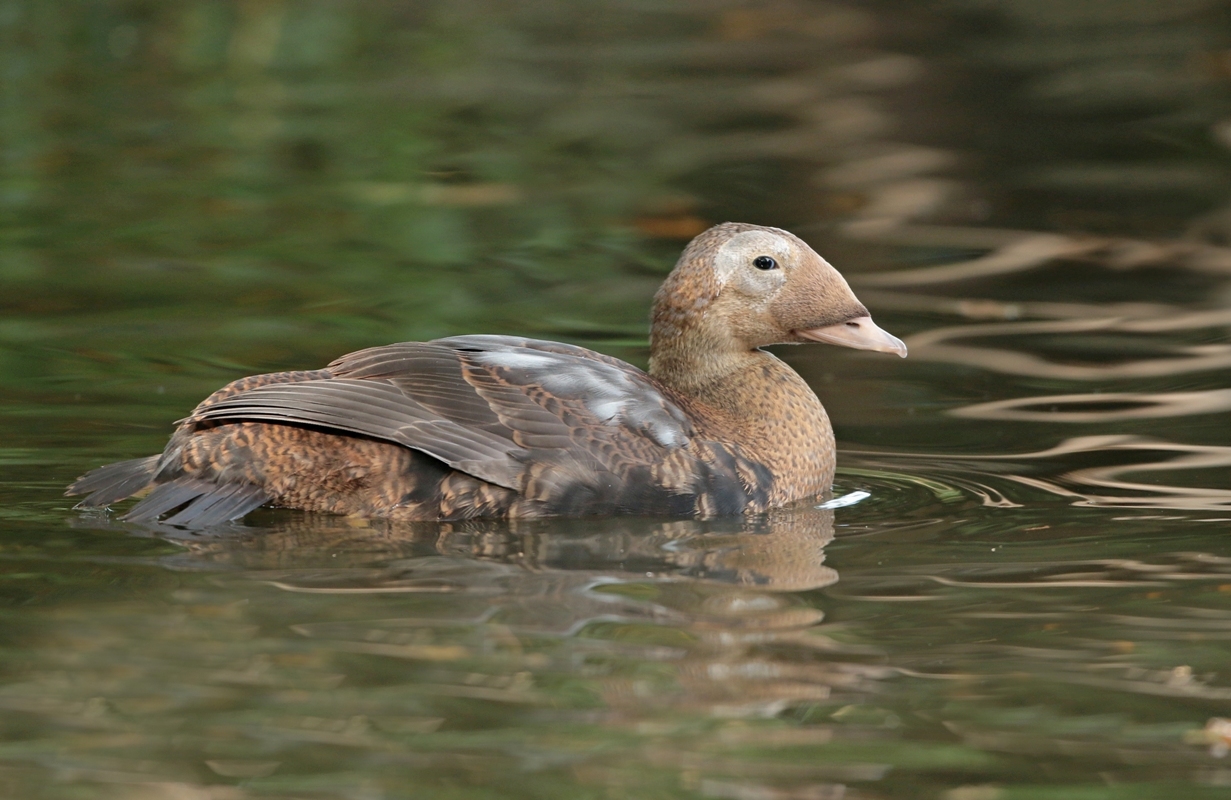Brileider
Somateria fischeri · Spectacled Eider
 Brileider ·
Somateria fischeri
·
19-10-2022 · Fred Visscher
Brileider ·
Somateria fischeri
·
19-10-2022 · Fred Visscher
| Datum | 19 oktober 2022 |
|---|---|
| Locatie | Gelderland |
| Fotograaf |
|
| Bekeken | 2416 × |
The inland coasts of Alaska and Russia are ideal for observing the species. But these birds are of course always in adult breeding plumage and at the most at the end of the breeding season you may see some moulting adults and juveniles/first calendar year birds (the plumage then depends on when they decide to leave the region..). The immature birds are actually only found at sea (first calendar year birds sometimes hang around Alaska and then join other species, for example King Eiders), or solitary around the ice where the adults stay outside the breeding season, second calendar year / second winter are almost never noticed in the breeding areas. To give an idea of what the males look like at certain ages, I share the different plumage of the species on this site. It is therefore not surprising that you will not find photos of certain moulting stages on the internet or in books. Books like Cramp&Simmons also don't get any further than terms like subadult and there are certainly no pictures of immature copies. Even in American literature there is not much about it and you often do not get beyond immature and then also without a date or month... The waterfowl keeper friend has been breeding the species for 40 years now and could therefore also tell that the moult strategy still fully corresponds to the early years of the hobby. Also, there is often exchanged with other owners of the species to prevent inbreeding....! Above a photo of a first autumn male that I photographed on 19-10-2022. |
Discussie
Fred Visscher
·
2 februari 2023 12:45
Gebruikers van het forum gaan akkoord met de forumregels.
